Lab 6: Deuterostomia; Phyla Echinodermata, Hemichordata, and Basal Chordates ppt
1/116
There's no tags or description
Looks like no tags are added yet.
Name | Mastery | Learn | Test | Matching | Spaced |
|---|
No study sessions yet.
117 Terms
Anus develops first, mouth later in development
Deuterostomes (def)
What type of cleavage do deuterostomes have
Indeterminate cleavage
Phyla within Clade Deuterostomia
Echinodermata, hemichordata, chordata
Phyla Echinodermata, Hemichordata, and Chordata are in Clade…
Clade Deuterostomia
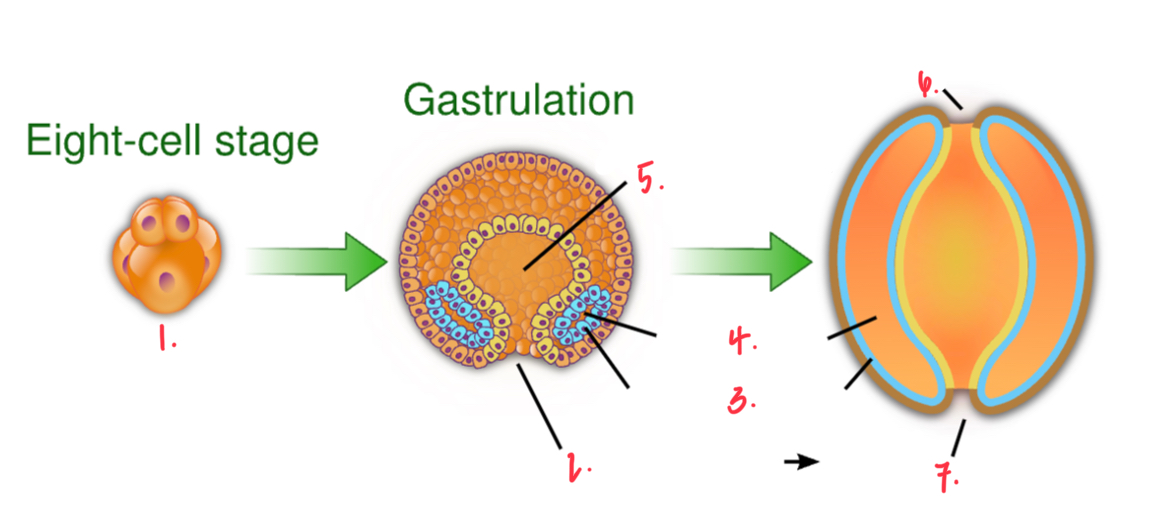
Which embryonic development does this photo depict
Protostomes
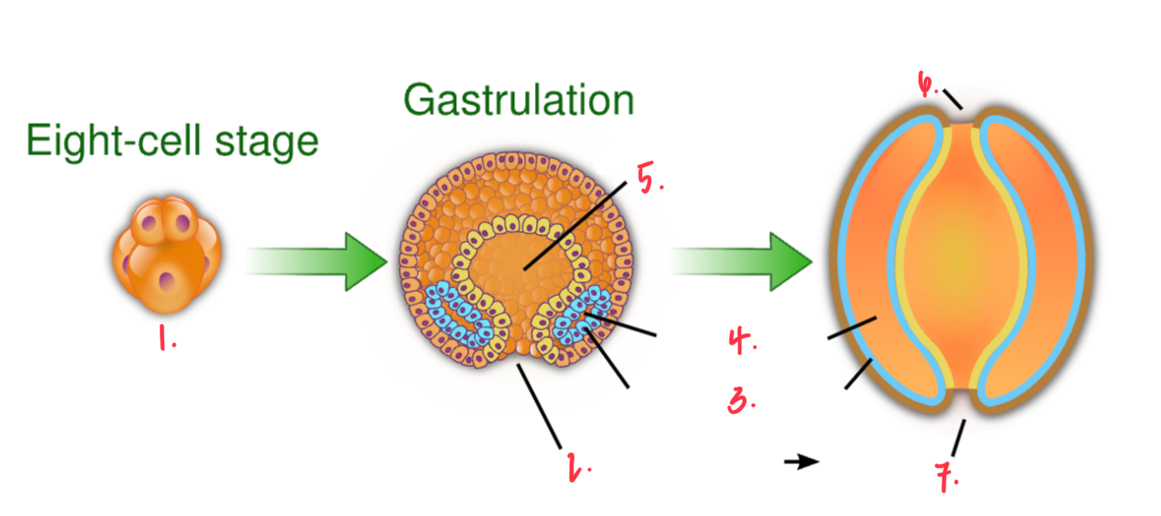
1 indicates
Spiral cleavage
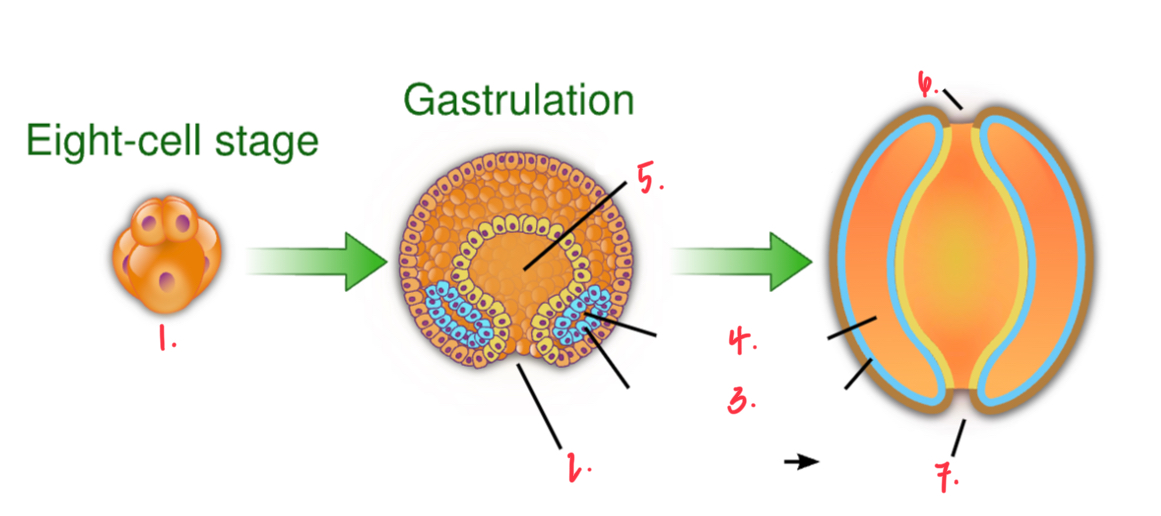
2 indicates
Blastopore

3 indicates
Mesoderm
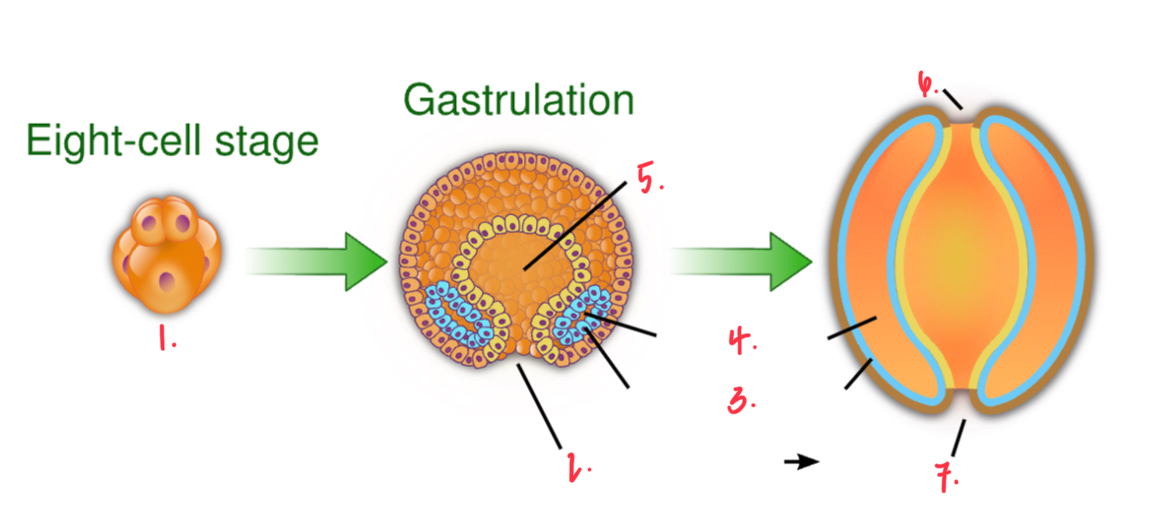
4 indicates
Coelom
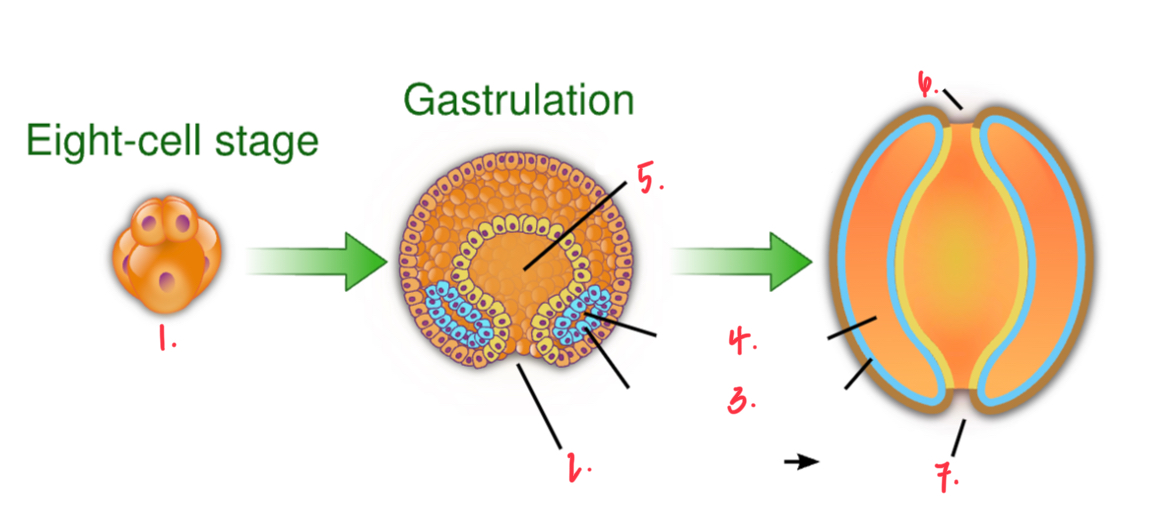
5 indicates
Archenteron

6 indicates
Anus

7 indicates
Mouth
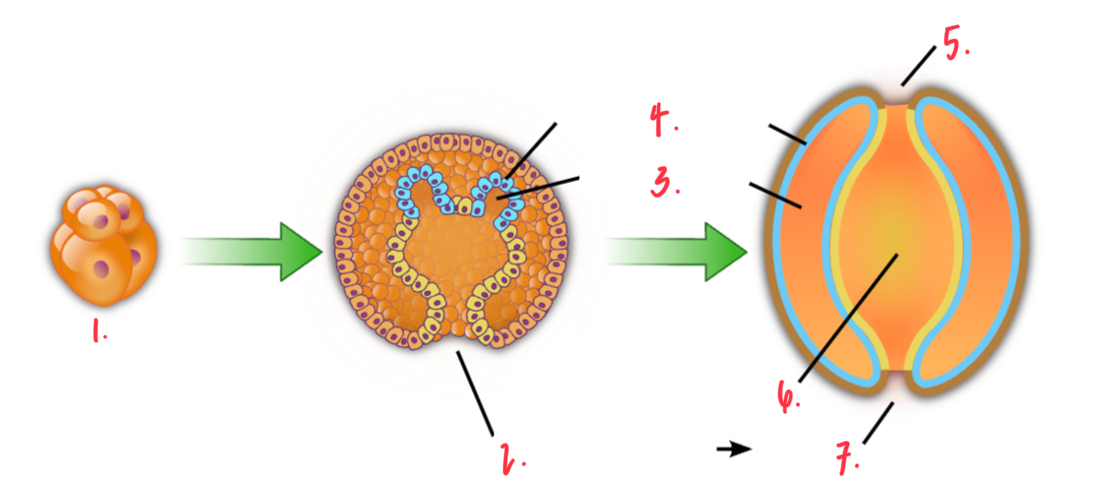
Which embryonic development does this photo depict
Deuterostomes
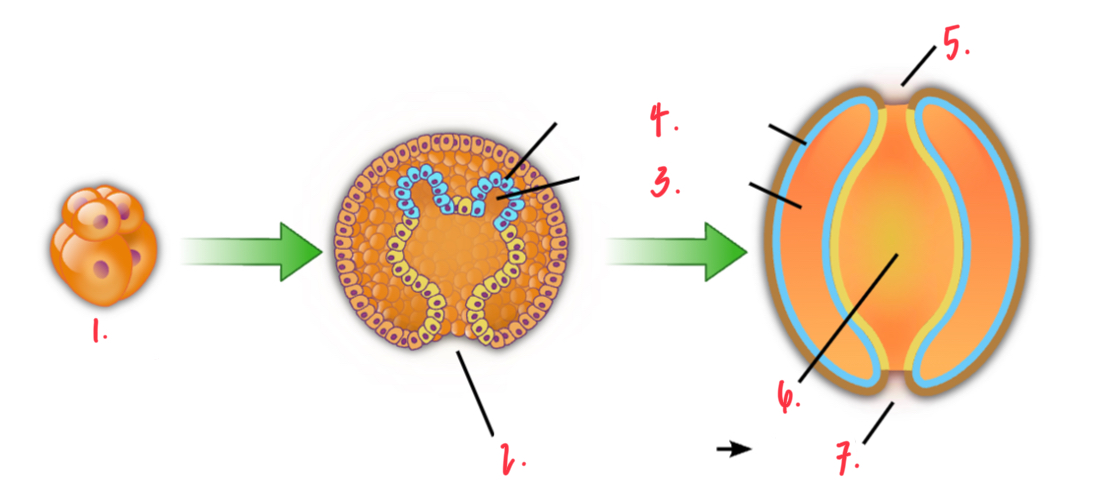
1 indicates
Radial cleavage

2 indicates
Blastopore
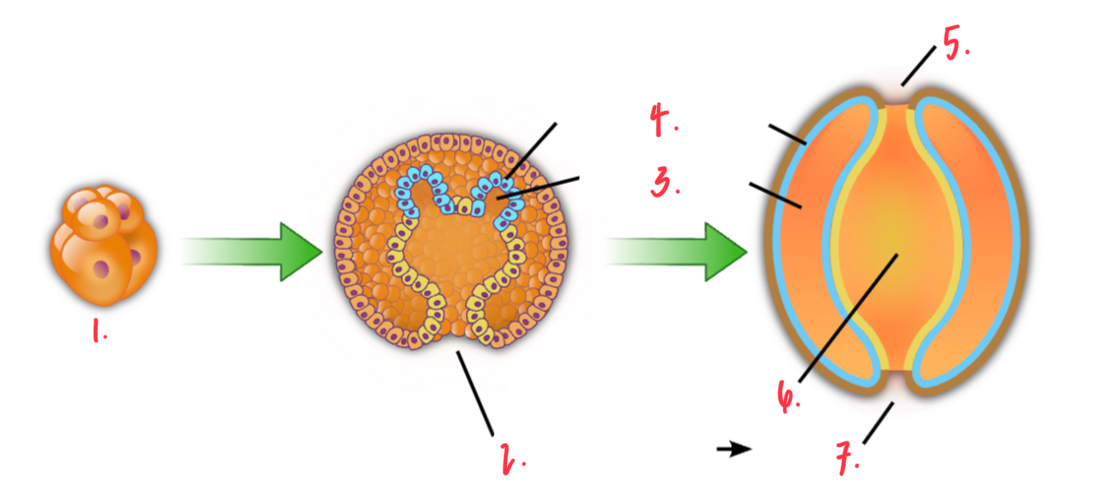
3 indicates
Coelom

4 indicates
Mesoderm
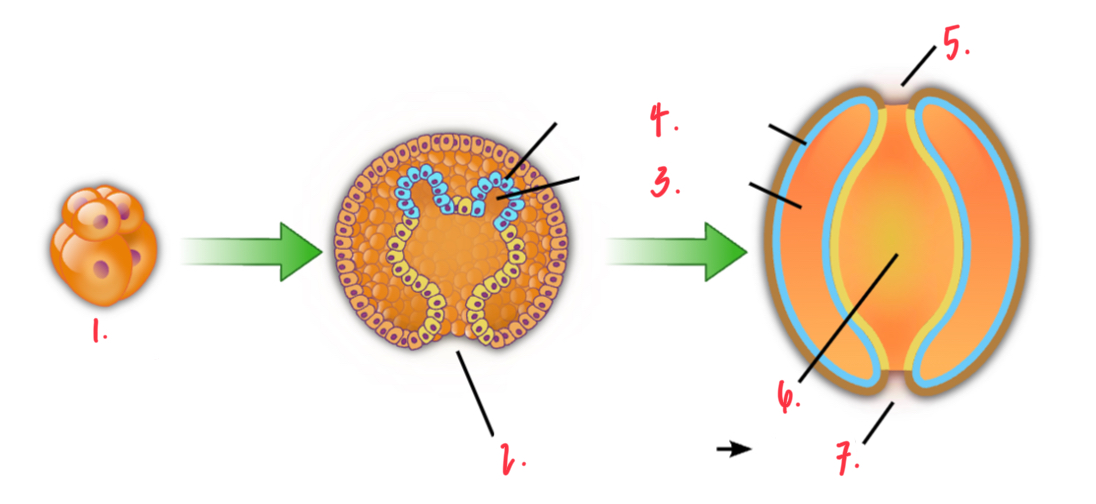
5 indicates
Mouth

6 indicates
Digestive tube

7 indicates
Anus
Common name of Phylum Echinodermata
Sea stars, sea urchins, sea cucumbers
Sea stars, sea urchins, and sea cucumbers are in Phylum…
Phylum Echinodermata
Phylum Echinodermata roots
Echino = spicy
Derma = skin
Where do Phylum Echinodermata live
Marine
Lifestyle of Phylum Echinodermata
Near sessile
What is so great about the body of Phylum Echinodermata
Regeneration capabilities
What is the purpose of the water vascular system in Phylum Echinodermata
Feeding, locomotion, gas/nutrient exchange
The water vascular system in Phylum Echinodermata is a ____ ____ of internal structures and canals
Hydraulic system
Entrance to the water vascular system
Madreporite (def)
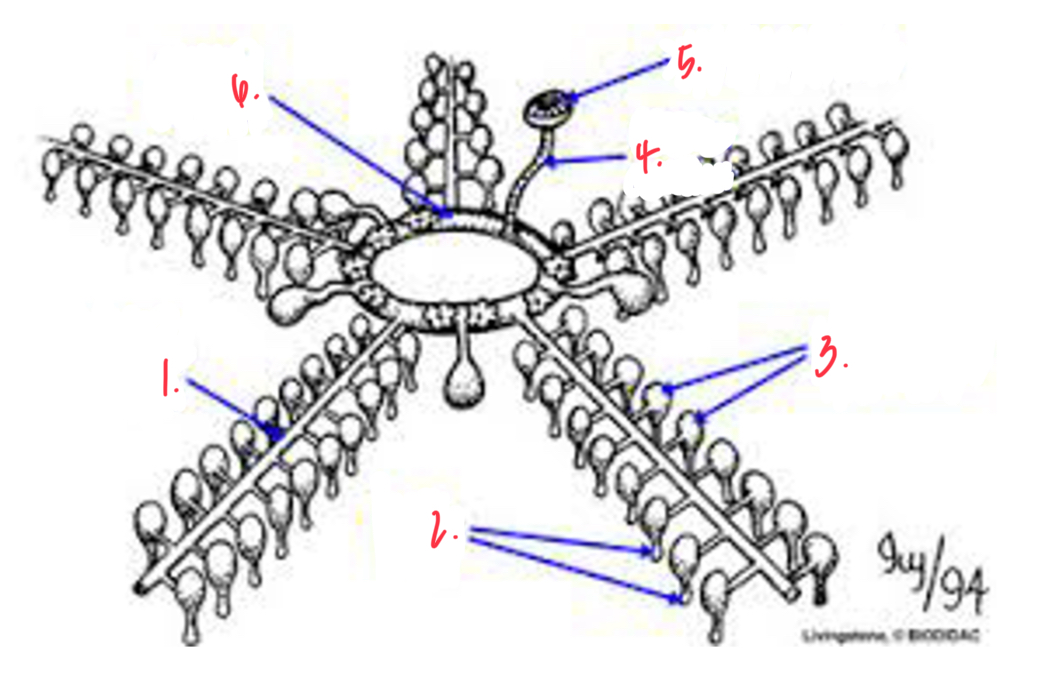
1 indicates
Radial canal

2 indicates
Tube feet
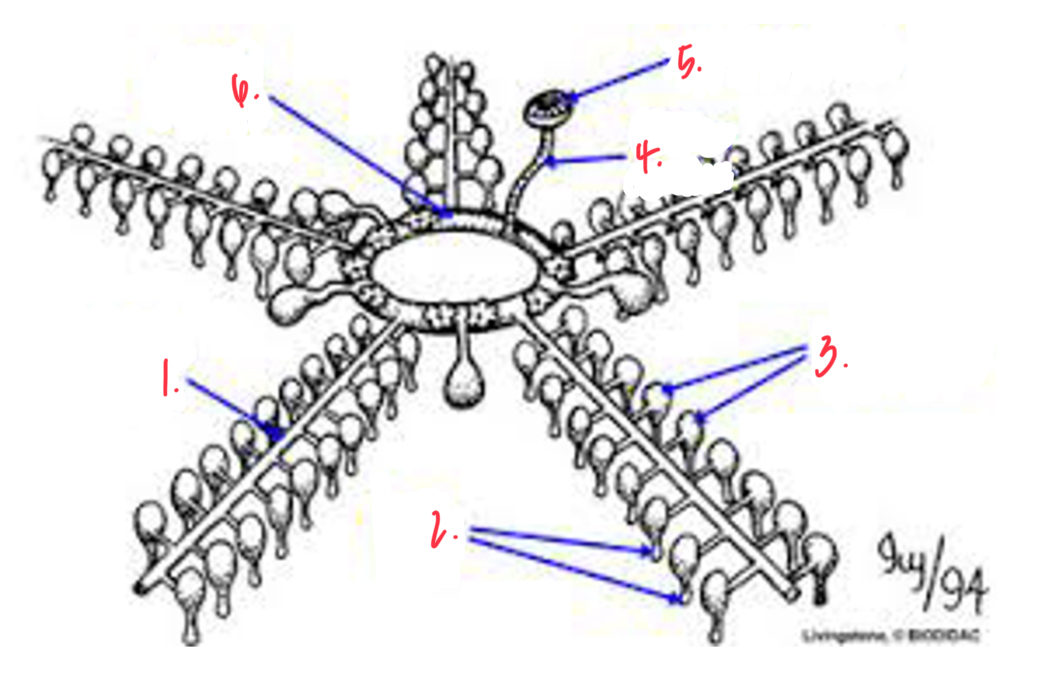
3 indicates
Ampullae
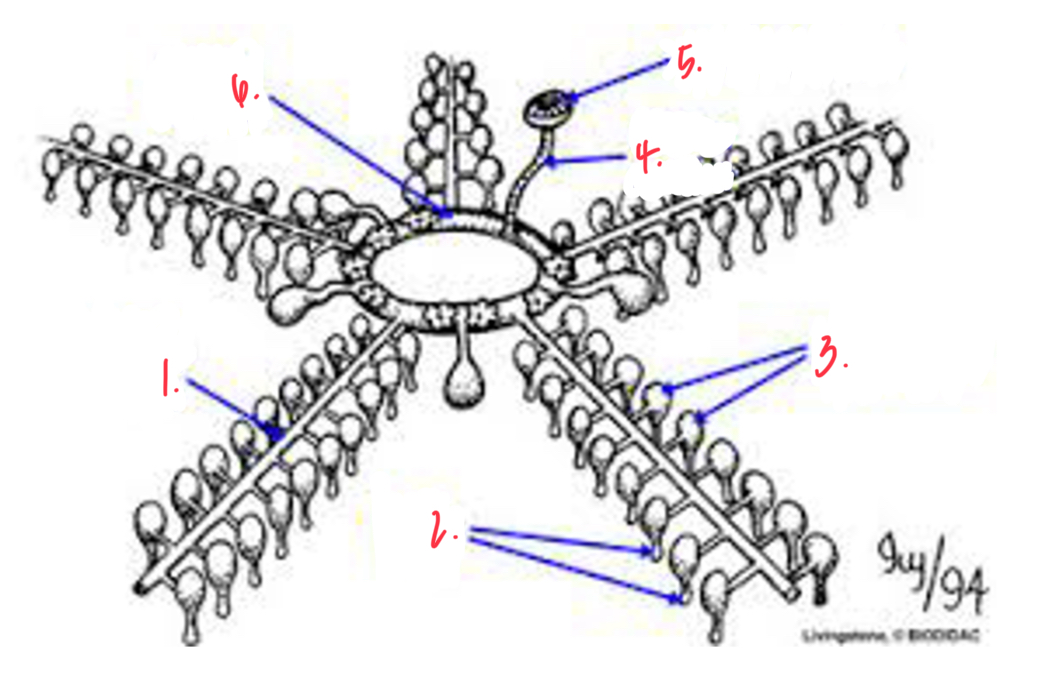
4 indicates
Stone canal
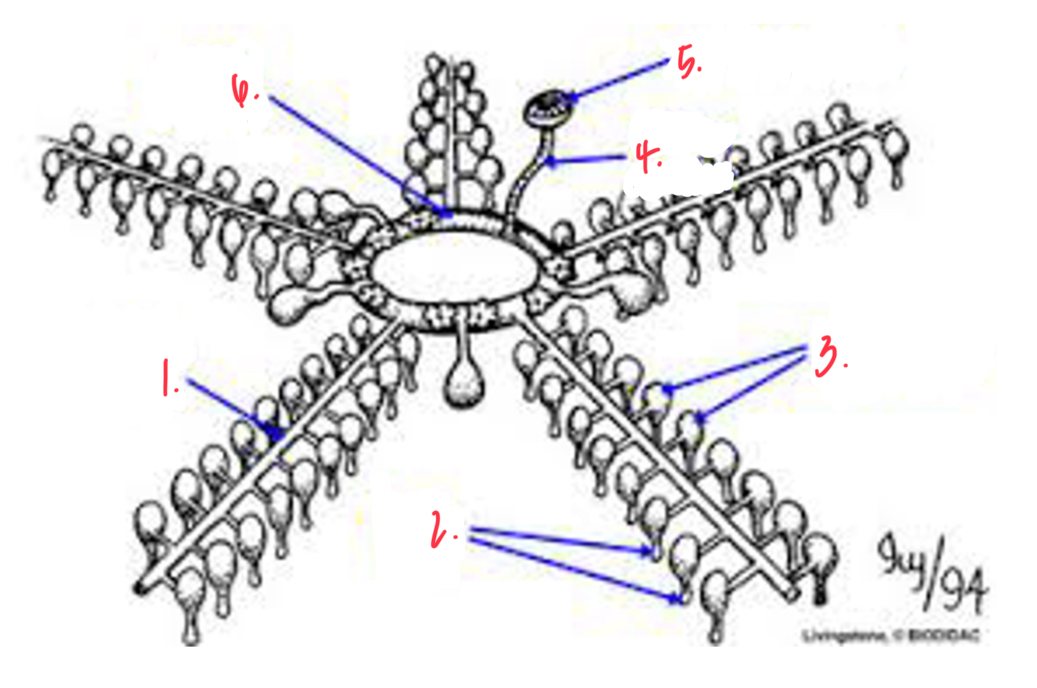
5 indicates
Madreporite
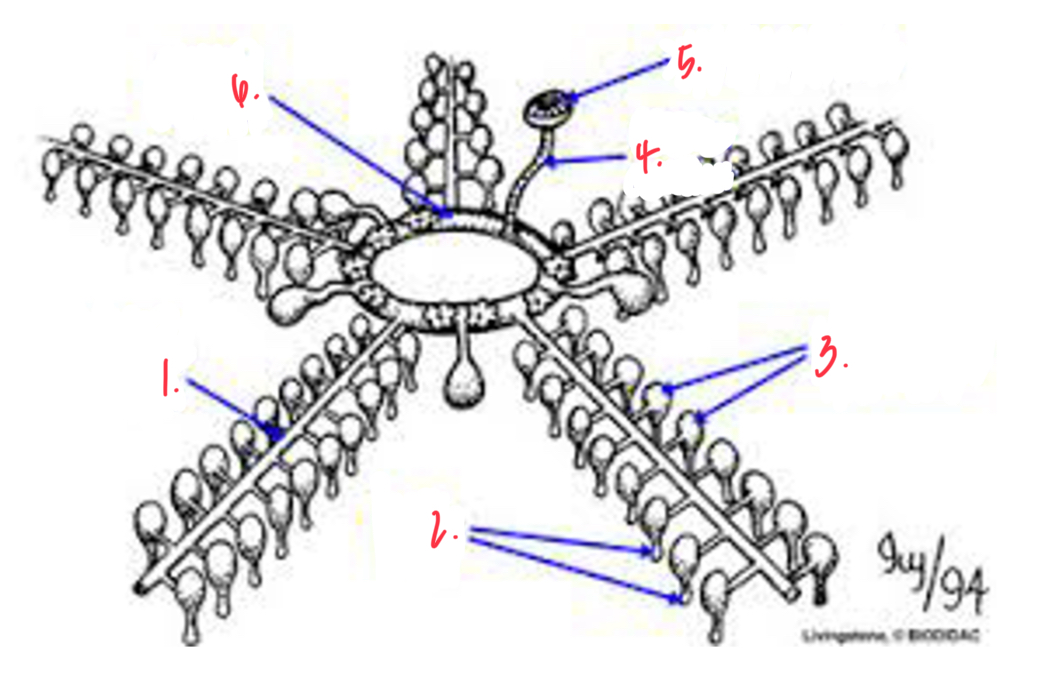
6 indicates
Ring canal
How has the symmetry in Phylum Echinodermata evolved
Secondarily evolved radial symmetry
What type of symmetry does Phylum Echinodermata exhibit in adulthood
Radial symmetry, pentaradial
What type of symmetry does the larval stage of Phylum Echinodermata exhibit
Bilateral symmetry
Growth of starfish (Phylum Echinodermata) larva
Bipinnaria > brachiolaria
Classes within Phylum Echinodermata
Ophiuroidea, echinoidea, crinoidea, holothuroidea, asteroidea
Classes Ophiuroidea, Echinoidea, Crinoidea, Holothuroidea, and Asteroidea are in Phylum…
Phylum Echinodermata
Common name of Class Ophiuroidea
Brittle stars
How are the arms in brittle stars (Class Ophiuroidea) connected to the central disk
Narrowly jointed to central disk
Brittle stars (Class Ophiuroidea) do not possess ____ ____ in their arms
Visceral organs
Where is the mouth in brittle stars (Class Ophiuroidea)
Facing ocean floor, ventral
Where is the madreporite in brittle stars (Class Ophiuroidea)
By mouth, ventral
Common name of Class Echinoidea
Sea urchins, irregular urchins, sea biscuits, sand dollars
Sea urchins, irregular urchins, sea biscuits, and sand dollars are in Class…
Class Echinoidea
Where is the mouth in Class Echinoidea
Facing ocean floor
What kind of symmetry does Class Echinoidea have
Pentaradial symmetry
What is the internal shell of Class Echinoidea called
Test
What is the body of Class Echinoidea covered with
Moveable spines
Structure in Class Echinoidea that is inside the mouth for leverage of the jaws
Aristotle’s lantern
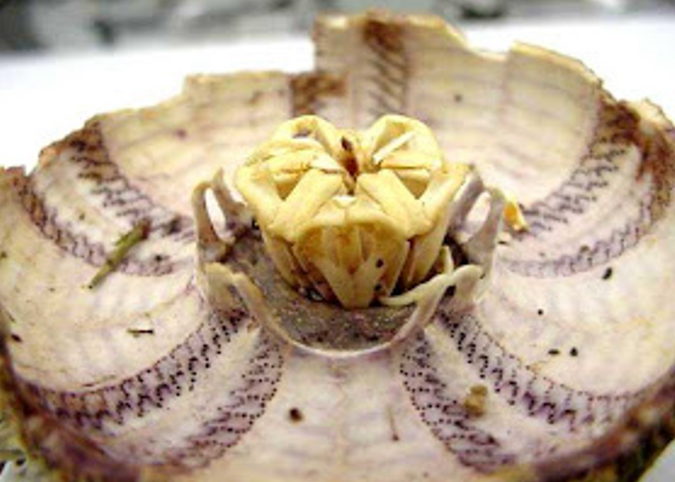
What structure is this, and what class is this in
Aristotle’s lantern, Class Echinoidea
Common name of Class Crinoidea
Crinoids
Crinoids are in Class…
Class Crinoidea
Lateral extensions for suspension feeding
Pinnules (def)
How many primary arms does Class Crinoidea have
Five primary arms
The subarms of Class Crinoidea have what connected to them
Pinnules
Lifestyle of Class Crinoidea
Sessile
How does Class Crinoidea attach to substrate
Long stalk, holdfasts
Common name of Class Holothuroidea
Sea cucumbers
Sea cucumbers are in Class…
Class Holothuroidea
What type of symmetry do sea cucumbers (Class Holothuroidea) have
Bilateral symmetry
Why have sea cucumbers (Class Holothuroidea) adopted bilateral symmetry
Motility
Body type of sea cucumbers (Class Holothuroidea)
Elongated bodies, soft bodied
Common names of Class Asteroidea
Starfish, sun stars
Starfish and sun stars are in Class…
Class Asteroidea
What kind of symmetry does Class Asteroidea have
Pentaradial symmetry
What structures are located on the aboral surface (faces upward) of Class Asteroidea
Madreporite, anus, nonmoveable spines, eyespots
Where are the non moveable spines located on Class Asteroidea
Everywhere except end of arm
Where are the eyespots located on Class Asteroidea
Every arm, distal end
What are the eyespots in Class Asteroidea used for
Light detection
What structures are located on the oral surface (faces downward) of Class Asteroidea
Ambulacral grooves, tube feet, mouth
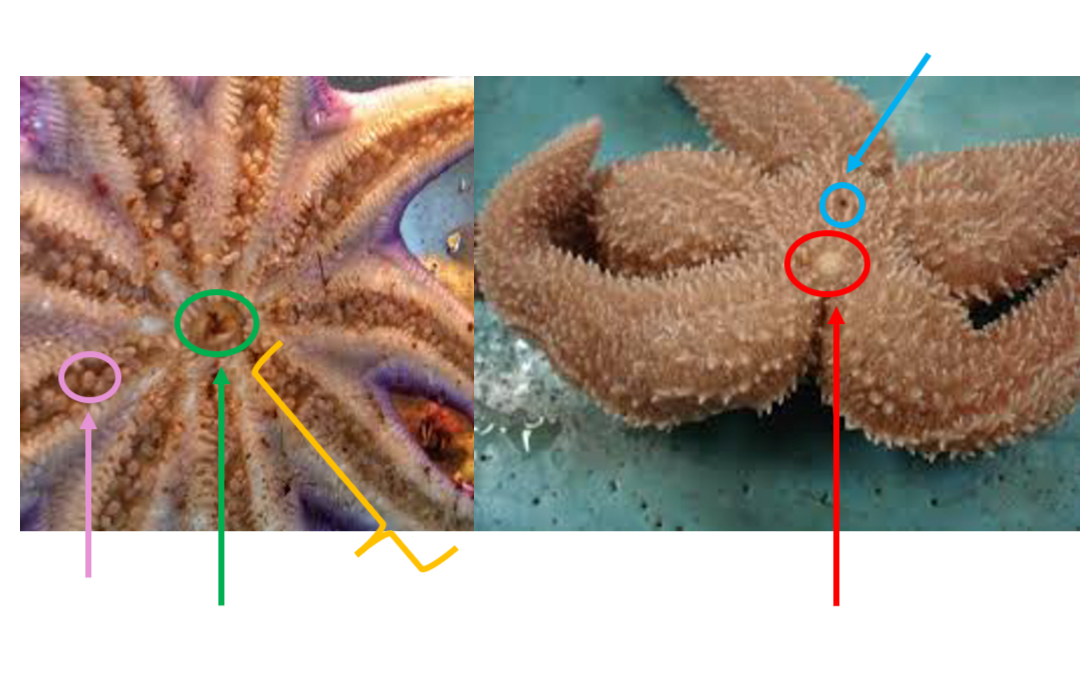
The pink arrow indicates
Tube feet
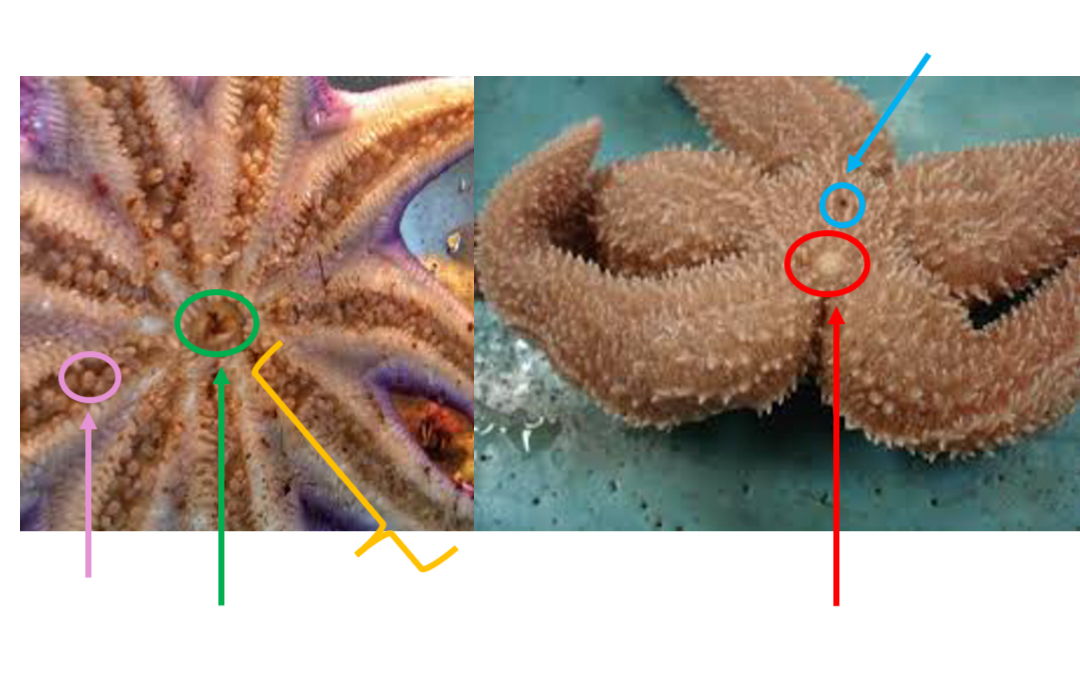
The green arrow indicates
Mouth

The yellow arrow indicates
Ambulacral groove
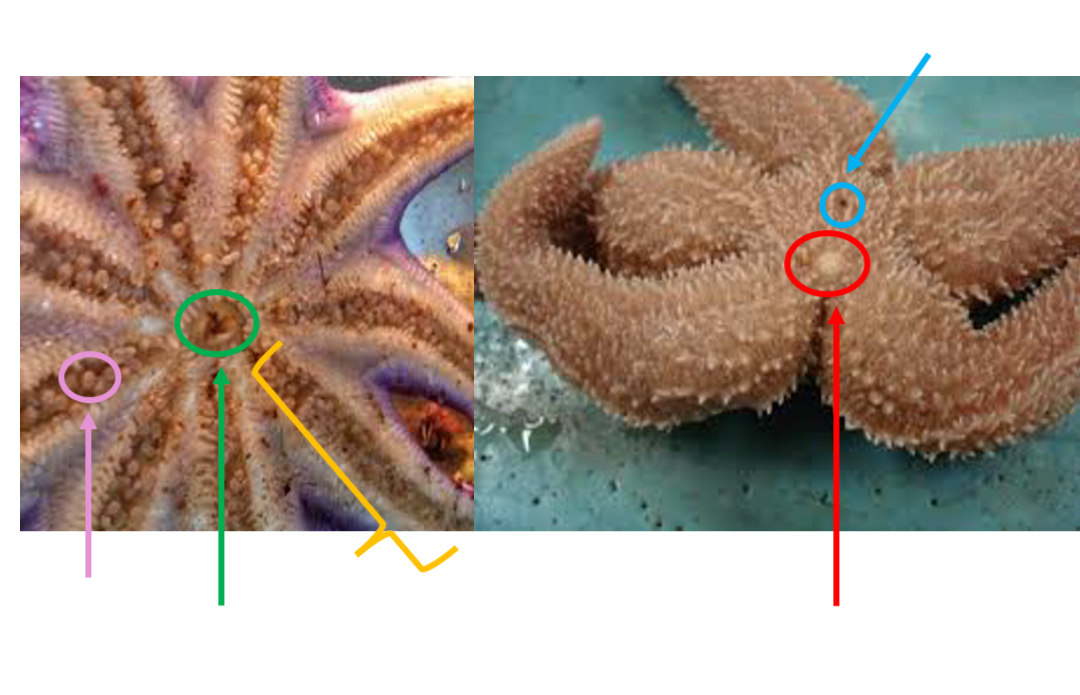
The red arrow indicates
Madreporite

The blue arrow indicates
Anus
Common names of Phylum Hemichordata
Acorn worms, pterobranchs
Acorn worms and pterobranchs are in Phylum…
Phylum Hemichordata
Roots of Phylum Hemichordata
Hemi = half
Chorda = chord
Phylum Hemichordata is sister to Phylum…
Phylum Echinodermata

What phylum and common name is this organism
Phylum Hemichordata, acorn worm
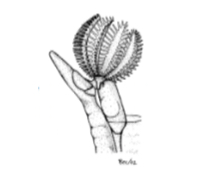
What phylum and common name is this organism
Phylum Hemichordata, pterobranch

Name the indicated structures, left to right respectively
Pharyngeal pores, collar, proboscis
What are the five chordate characteristics in Phylum Chordata
Notochord, nerve cord, pharyngeal slits, post anal tail, endostyle
What type of segmentation does Phylum Chordata exhibit
Metameric segmentation
Purpose of pharyngeal slits in Phylum Chordata
Filter feeding
Purpose of post anal tail in Phylum Chordata
Locomotion
Precursor to the thyroid gland, used for food capture
Endostyle (def)
Supports based on hydrostatic pressure
Notochord (def)
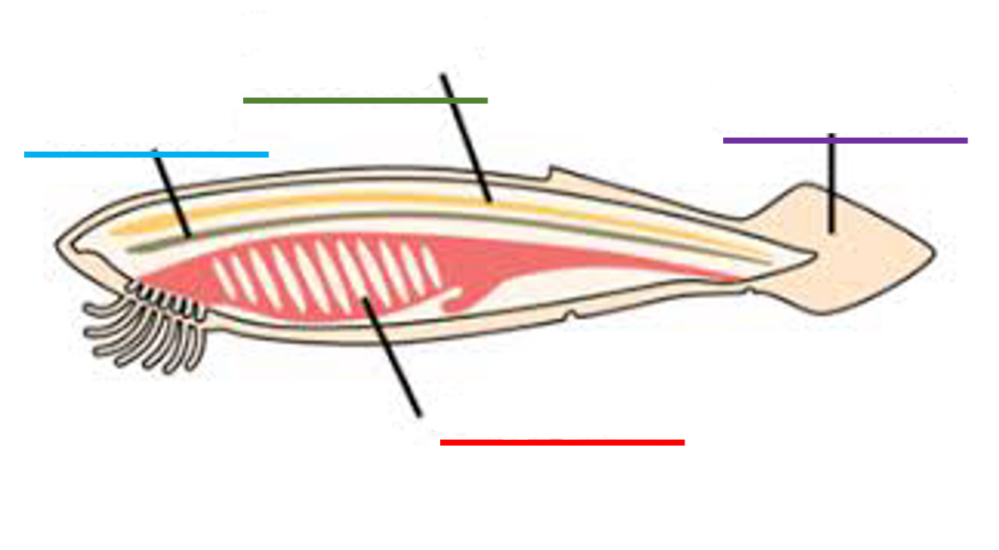
Blue indicates
Notochord

Green indicates
Nerve cord

Red indicates
Pharyngeal slits
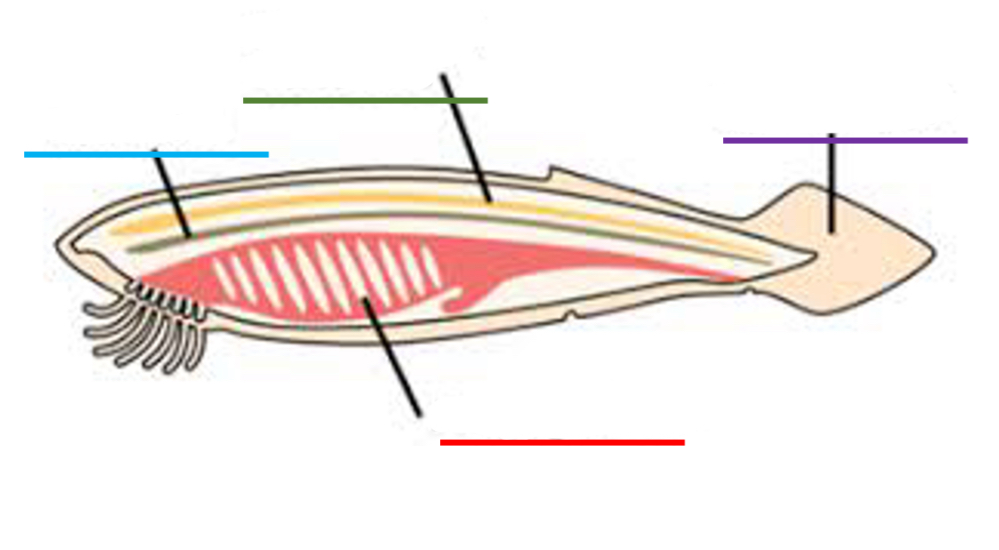
Purple indicates
Post anal tail
Subphyla in Phylum Chordata
Cephalochordata, urochordata, craniata
Subphyla Cephalochordata, Urochordata, and Craniata are in Phylum…
Phylum Chordata
Common name of Subphylum Cephalochordata
Lancelets
Feeding method of lancelets (Subphylum Cephalochordata)
Burrowing deposit feeders